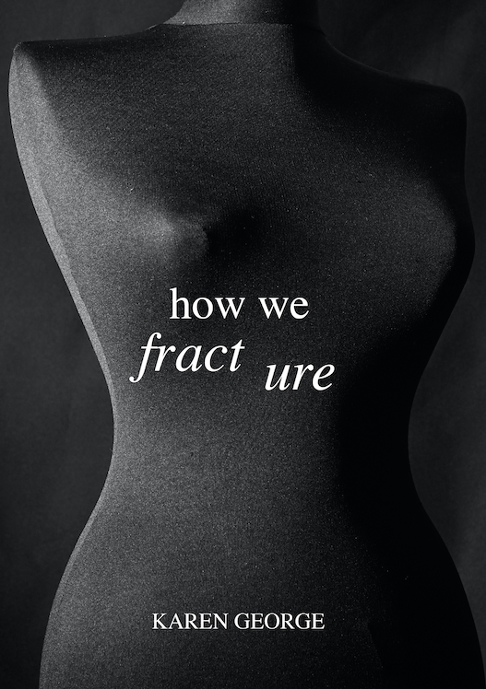Book Review
Karen George’s, How We Fracture, is a new collection of short stories that captures the lives of different female characters in various stages of life. Each story is beautifully structured and gifts the reader with imagery, usually beautifully describing nature from birds to flowers, but also minor details of the characters such as their dangling earrings or the contents of their closets. George brings characters to life.
George has talent for hooking the reader with the first sentence of each story. In “Palindromes,” she grabs the reader’s attention with the sentence “Anna entered my life a mystery and left the same way.” This story vividly revisits what it’s like to be a girl in high school and learning about yourself while wondering about your peers as you try to navigate the teenage world.
In “Taking Count,” two strangers build an unlikely friendship by sharing their struggles, losses, and gains. After Savannah, the main character, meets Shay while he is sweeping his front porch, they begin to glimpse each other’s vulnerabilities. Lines such as the following, leave the reader falling in love with the growing relationship that George prints on the page: “I couldn’t believe we were talking about such intimate things. The strain in his voice made me want to count the goldfinches, grackles, and chickadees in his yard. But with birds, you can never be sure you haven’t counted them more than once. I can’t tolerate inaccuracy.” Shay and Savannah find comfort in each other as they share intimate details: “I told him how I went from foster home to foster home until a couple adopted me. Afraid they’d send me back, I hid a lot of my compulsive behaviors from my adoptive parents.”
George moves us through the many stages of womanhood. “What to Leave Behind” is the story of a woman who is hiding in the bedroom closet because her lover’s wife has returned home early. Page after page, the reader wonders what will happen next. “A tickle started in my nose, precursor to a sneeze. I closed my eyes tight, held my breath, and talked myself out of it.” As the tension builds, the character explores the contents of the closet, and we learn more about the wife and the woman hiding. “When I pushed the knob to the side, the latch clicked open loudly. One of the two in bed, snorted but didn’t move. I slipped the cold, hard object out if its niche. Not until I molded my hand around it did I realize it was a gun.”
In “Living Without,” two friends, Mia and Riza, give us a snapshot of women in their late thirties/early forties and the struggle and complexities at this stage of life as a woman. George captures this well as the two women sip wine at a cabin. The line “In the country, you use fewer words, but you say more” captures a truly comfortable friendship that has lasted years and can only be earned by age and experience. When Mia, finally attempts to reveal a secret, Riza eases the moment as only a close friend who truly knows one could.
“The Dance” is another beautifully written short story about a struggling couple. George writes: “Dewey’s fist slams something. In the next room, I feel the force in the soles of my feet. Has my husband finally lost control? His temper’s worsened since the death of our son, Neville, five years ago.” In this piece, George artfully captures a couple during the holiday season as they navigate loss and love. In only a couple of pages, she creates strong characterization and pulls the reader in with lines such as “Nothing brings out Dewey’s temper like something he can’t fix. I steer clear of him when he’s riled up by something mechanical or electrical. I’m used to people with bad tempers. I had one as a child. My dad tried to beat it out of me.”
Throughout this collection of short stories there is tension. In “Constraints,” a visit to a doctor’s office turns into a full-blown event due to a convict in the office who is also a patient: “I’ll never forget the look in his eyes, right before I tripped him. He believed he had a chance. Who knows how far he could have gone? Maybe his friends waited around the corner in a van with a hacksaw to remove his chains.”
How We Fracture is not just a collection of sixteen short stories about women at different stages of life. It is a beautifully written collection of struggles, sisterhood, friendships, love, and loss. It is about the details in life that make the human experience both wonderful and awful. George captures what it is to be human and reveals the rawness of what makes someone who they are. It is about what makes a human vulnerable. The description, detail, beautifully written prose, and imagery leave the reader wanting more from each story.

Shae M. Hall is a professor and program chair. She has published three short stories. Her work appears in Northern Lights, Waypoints, and Evening Street Review. She enjoys reading and writing short fiction in her spare time and is currently the president of Cincinnati Writers Project, a writing group. She loves spending time with her family and friends in northern Kentucky.
Read all of Still: The Journal's past reviews

